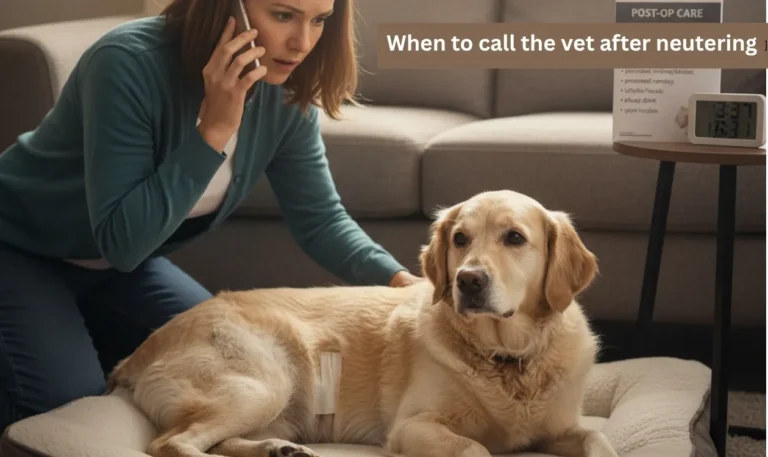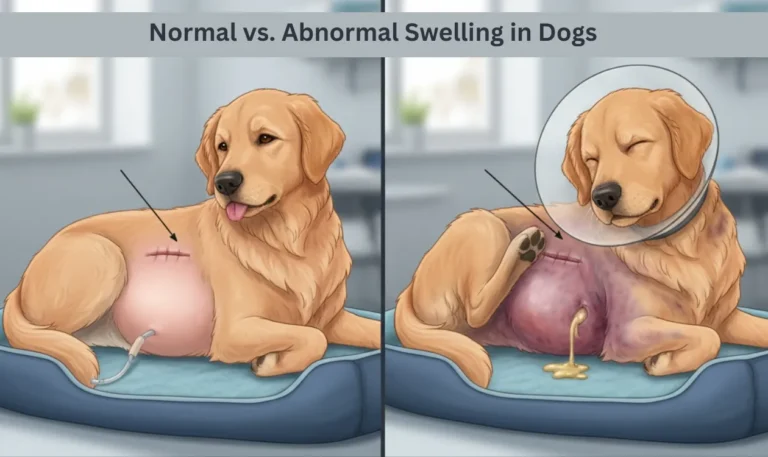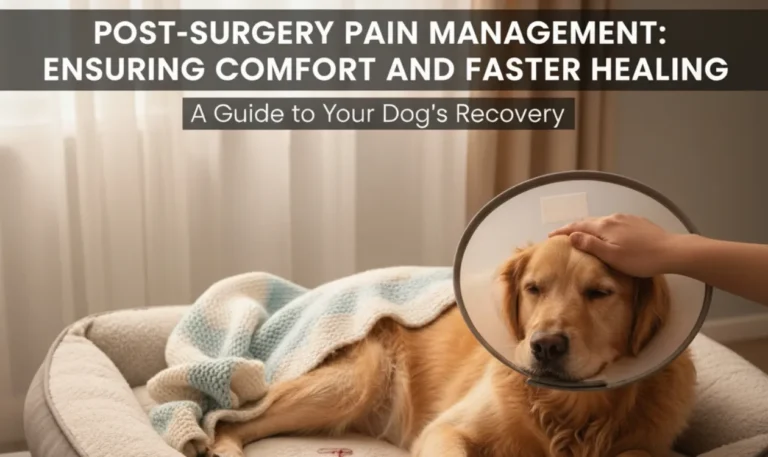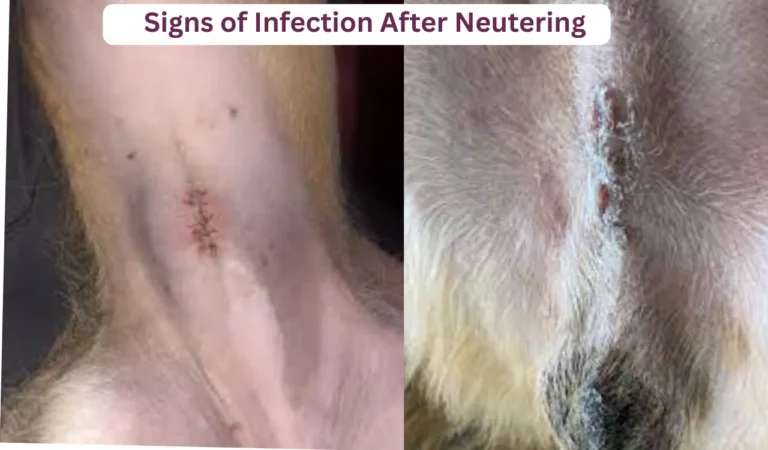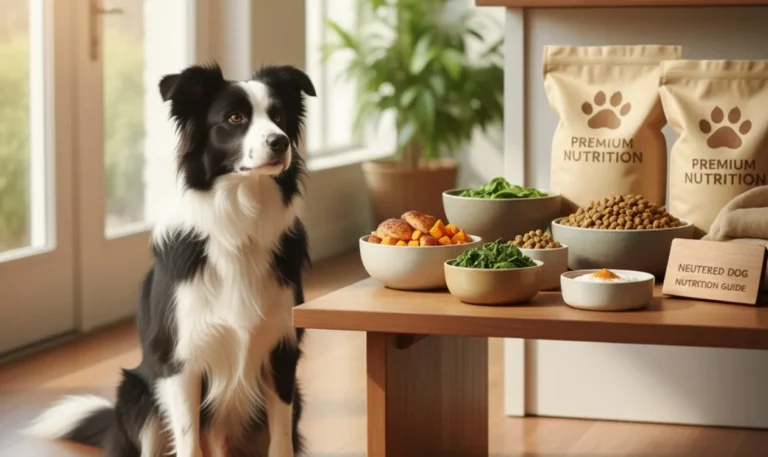Dog Post-Surgery Feeding: Full Recovery Dog Meal Plan
Full Recovery Dog Meal Plan with soft foods, proper portions, hydration, and vet-approved nutrition to support safe healing and a smooth post-surgery recovery..
It is rather stressful to take care of your dog after surgery and in particular, feeding. An effective postoperative diet of a dog plays an important part in ensuring recovery, strength, and weight loss. A well-balanced recovery diet is usually recommended to restore the power of these dogs, as they usually break their feeding due to anesthesia, pain, or stress.
This is made possible by feeding your dog properly in recovering so that they can go back to normal feeding. It is important to know about portion control, nutrition balance and timing of feeding. When properly advised, you may be able to assist your dog to get on its feet and easily and safely recover.
Understanding Your Dog’s Nutritional Needs Post-Surgery
Essential nutrients are required to help tissue regeneration and immune protection in your dog’s body after surgery. Proteins are important for repairing damaged cells, while fats provide energy. However, too much fat can slow digestion, which is why balance is important. The optimal diet includes lean meat, moderate fats, and digestible carbohydrates. Proper nutrition also supports catabolism the metabolic process of breaking down nutrients to release energy.
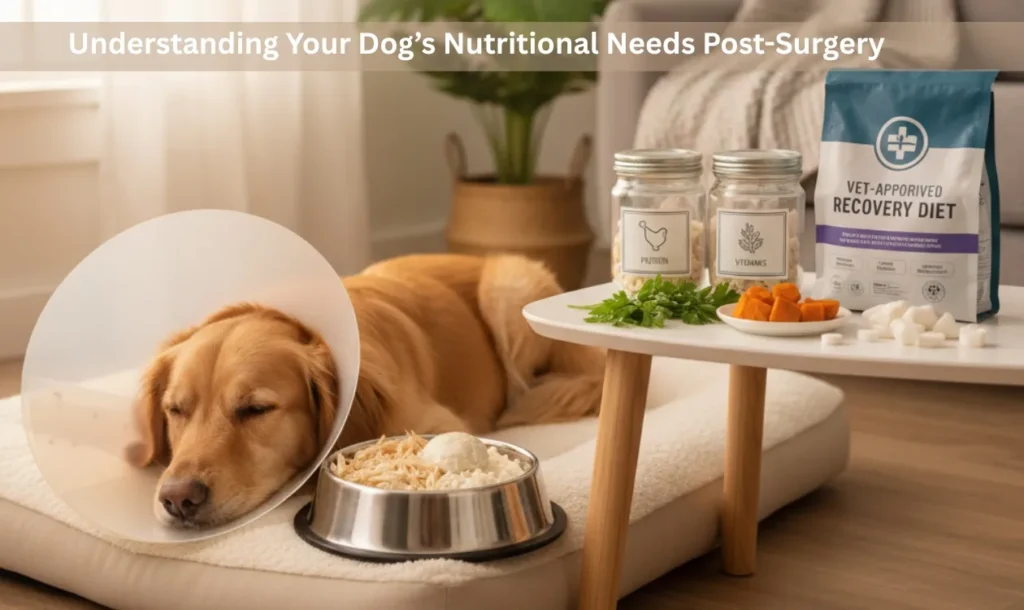
Depending on the health of your dog and the type of surgery that you have carried out, your veterinarian might advise special foods or supplements. There should be no excess feeding since the lack of activity may result in weight gain. The hydration also is necessary to assist in the functioning of the kidneys and general recovery.
When to Start Feeding After Surgery
It is quite likely that after surgery your dog will not want to eat immediately due to the residual effects of anesthesia. This temporary loss of appetite usually improves within 12 to 24 hours. Begin with small, soft foods such as boiled chicken, rice, or vet-approved wet food. This helps prevent vomiting and allows your dog’s stomach to adjust. Proper dog care during this stage ensures a safe and comfortable return to normal eating.
Eat in small channels and frequent meals. Keep a check on your dog and provide attention to their behaviour, in case they vomit or refuse to eat, call your vet. Reintroduce their normal diet gradually when the level of appetite and energy increase.
Best Soft Foods for Dog Recovery
The best post-operative food for dogs is soft food because it is gentle on the stomach and easy to digest. Examples include boiled chicken, plain rice, pumpkin purée, and low-fat cottage cheese. These foods are easy to digest and contain essential nutrients. Soft diets also support gastric motility the normal movement of the stomach that helps food pass smoothly
Recovery diets that are commercially available to vets are also perfect as they are balanced and made specifically to heal. Food should always be heated a little to increase aroma and stimulate the appetite. Do not use any spices, oils, or salt because it will upset the stomach of your dog.
Creating a Balanced Dog Meal Plan After Surgery
The proper dieting after surgery will guarantee the dog receives all the necessary nutritional needs to recover. Use low-fat sources of protein such as chicken, turkey, or fish as well as soft vegetables such as carrots or peas. Include a little bit of rice or oatmeal as energy.
Included in the supplements are omega-3 fatty acids and probiotics, which should also be included in case of healing and digestion in case your vet does not disapprove of them. Feel the need to follow the routine when it comes to feeding. This arrangement can rejuvenate the body of your dog in a better way and it enhances appetite naturally.
How Much Should You Feed Your Dog?
The issue of portion control is essential following surgery. Excessive feeding may cause digestive upsets whereas insufficient feeding slows down the healing process. In most cases, they feed smaller meal rates more often during the day. Split the amount of food one has and eats per day in 3-4 small portions rather than 1-2 large portions.
Keep track of the weight of your dog and adjust the size of meals accordingly. If your dog is still lazy or without appetite, visit your veterinarian. It is important to remember that slow feeding—not fast feeding—is the aim of healing. This moderate method will avoid bloating and promote long-term recovery. Sudden overeating can also trigger gastric distress discomfort or irritation in the stomach during recovery.
Hydration and Recovery
The same way food is essential in the post-surgery recovery of your dog is hydration. Give clean water on a regular basis but do not make your dog drink right after operation. Dogs can require the fluids with the help of a syringe because some can refuse drinking.
Fluid intake may also be added to meals by adding water or unsalted broth. Being hydrated aids in controlling the body temperature, aids in digestion, and sustains the energy level during the healing process.
Foods to Avoid After Surgery
Some of the foods may damage your healing dog and slow down the process. Fatty, salty, or spicy foods should be avoided as it may result in diarrhea or stomach ache. Do not feed your dog chocolate, onions, garlic and processed human food. These may be poisonous and disruptive with drugs.
Even a high-protein diet must be moderated if your dog has undergone abdominal or kidney surgery. The most effective way to manage this is by following the dietary instructions given by your vet, ensuring healing without complications. Excessive protein can sometimes contribute to nephrotoxicity kidney damage caused by metabolic stress or certain substances.
How to Encourage Eating After Surgery
When your dog does not eat, then you should be patient. Warm the food a bit to be inviting or encouragement can be made by hand-feeding. It is also possible to stimulate the appetite by providing soft, tasty choices such as chicken broth or baby food (without onion or garlic).
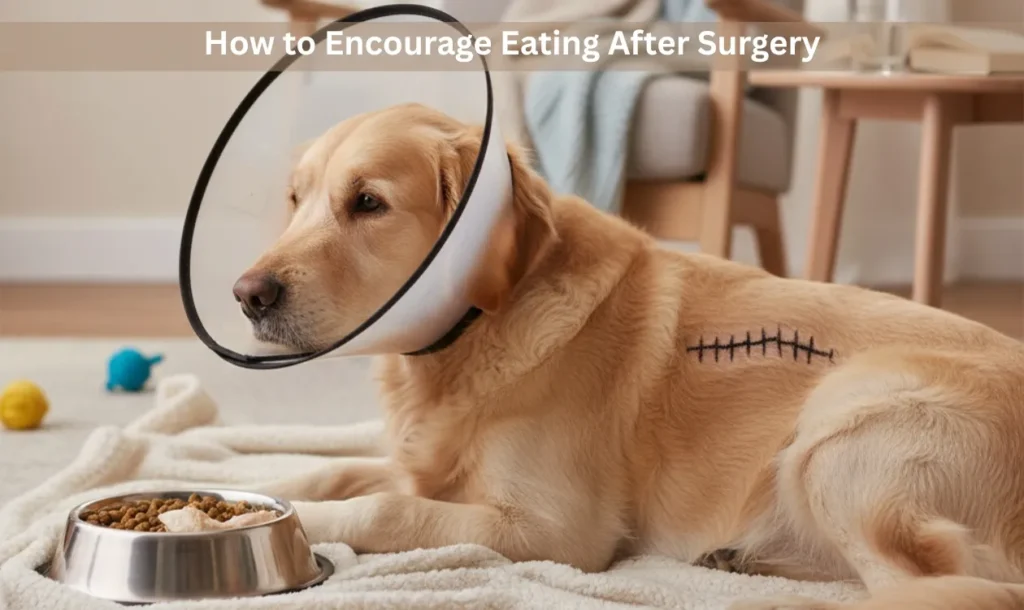
Give your dog its meal in a rough and comfortable place with no distraction. Emotional encouragement is very significant in recovery – keep close and composed at mealtime. Dogs tend to eat well when they are safe and they are convinced
Adjusting the Diet During Recovery
When the dog regains its energy level, slowly transition it to the normal diet. Combine limited portions of hard food with soft food to facilitate change. Monitor stomach upsets and decelerate wherever applicable.
The recovery diet ought to take one to two weeks at the recommendation of your vet. Monitor the weight, hydration and the level of activity of your dog. Provided they recover well, then you can put them back to their usual feeding habit.
Long-Term Feeding After Recovery
Once your dog has completely recovered, do not forget to watch out on the sizes of portions and a balanced diet. Dogs that have undergone surgery are likely to gain weight because they lack exercise. Select a good and healthy dog food that is rich in lean protein and fiber and is low in fat.
Exercising your dog regularly and feeding it under control will keep it healthy in the long-term. Also book regular vet check-ups so that your pet is in perfect weight and healthy nutrition even upon recovery.
FAQs : Full Recovery Dog Meal Plan
Final thoughts
The post-surgery dog diet is something that deserves careful planning, which can result in the difference between recovery. Proper proportions of nutrition, hydration, and care mean that your dog will heal and have energy in a short time.
It is worth remembering to feed on small portions, select soft and gentle foods and adhere to the instructions of your vet during the healing process.
Post-surgery nutrition should be healthy to your dog and every meal should be seen as a step to complete recovery.

